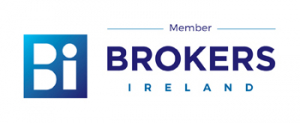Post Retirement Planning
As a financial advisor with specific focus on the Construction Sector, I find myself frequently discussing business on this basis. In recent years, terms such as BIM and Lean and Augmented Reality have crept into the discussion, and I’ve found myself having to ask for explanations… During a meeting with a client recently, we laughed about our respective industries’ jargon and how, when exposed to it every day, you can easily forget that it’s not so obvious to outsiders. And so for the next few issues I will focus on busting this jargon!
Post-retirement planning is one of the key areas I specialise in and it is littered with jargon – so it’s a good starting point.
ARF
This is the acronym formed out of Approved Retirement Fund. An ARF is one of the two ways you can place you pension fund when you retire. It is approved by the revenue and provided by Qualified Fund Managers (QFM’s) such as Life Assurance Companies. ARFs are used for those who decline the option of using their retirement fund to purchase an annuity. A broad outline of the Revenue rules around this are: -You must have a minimum guaranteed income for life, currently set at €12,700 per annum, or: – You must already have previously invested €63,500 from the proceeds of another Pension or current Pension in an AMRF (Approved Minimum Retirement Fund).
If you do place the balance of your Pension Fund in an ARF & AMRF, your money can be invested in a wide range of asset classes, depending on the level of risk and volatility you are prepared to accept. This can range from simple cash funds or in shares or property or absolute return strategies. This decision should be based on your personal views and financial situation.
This brings us to some of the investment terminology, “asset classes”, “risk”, “volatility” and “absolute return strategies”. When planning for retirement, particularly the post retirement phase, these are terms you are likely to hear frequently.
Asset Classes & Asset Allocation
This is defined as a group of financial instruments that have similar characteristics and behave in a similar fashion. Equities or Shares as they are commonly known are an example of this. They represent a share in a privately held company and although individually they will not perform the same, they are all subject to similar characteristic in the marketplace in terms of why they increase or decrease in value. To put very simply, if the company you hold a share in is performing very well, you could expect that share to increase in value. Conversely, if the company you hold the share in is performing poorly, you would expect that share to lose value. Other Asset Classes include Bonds, Cash and some would also include property and commodities within this definition. It is from here we get Asset Allocation – this is referring to how your money is invested and the proportion of each different asset class in an investment portfolio that you chose. To ensure that all of your eggs aren’t in one basket, it would be preferable to invest your ARF in a portfolio with a diverse asset allocation.
Risk & Volatility
Part of the process in choosing an appropriate portfolio with a suitable asset allocation is establishing your risk profile. This is something your advisor will do firstly by ways of a metric tool such as a questionnaire and following on from that, a conversation. Whereas volatility is the measure of the movement of an asset class from high to low, risk is viewed as the potential downside. Most investments involve an element of risk: that you could lose some or perhaps all of the original money that you had invested or your investment may not achieve the return expected. Volatility and Risk vary from asset classes and portfolios and therefore it is important that investors understand all the risks associated with any fund before they invest.
Absolute Return Strategies
While not technically a new “Asset Class” – absolute return strategies are being used more frequently to diversify a portfolio in the way the traditional asset classes are used. Taking the example mentioned above of how shares behave traditional equity/shares and managed portfolio funds focus on beating a market index or other managed funds as a benchmark. This means that their returns rise and fall in line with other shares in these sectors – their returns are judged relative to other investments. Absolute Return strategies returns differ because they are concerned with the return of a particular asset and not a comparison to a benchmark. The Fund Manager would choose particular assets with the aim of generating positive returns in any market conditions. For this reason, you are relying on the skill set of the fund manager rather than market conditions for the performance of this type of investment of asset class.
Overall, when investing in an ARF, your advisor should invest you in a portfolio with an asset allocation that suits your risk profile. You should understand the jargon so that you can be confident you are making the right decision for you.
Here to help you navigate your way to financial security.
The Milestone Advisory team are qualified financial services consultants. We specialise in helping professionals in the construction sector and related industries. Our team will work with you to review your finances, explaining your options in clear English.
No jargon – just the facts.
For further information please contact Susan O’Mara via email or phone: (01) 406 8020. Milestone Advisory DAC t/a Milestone Advisory is regulated by the Central Bank of Ireland.





